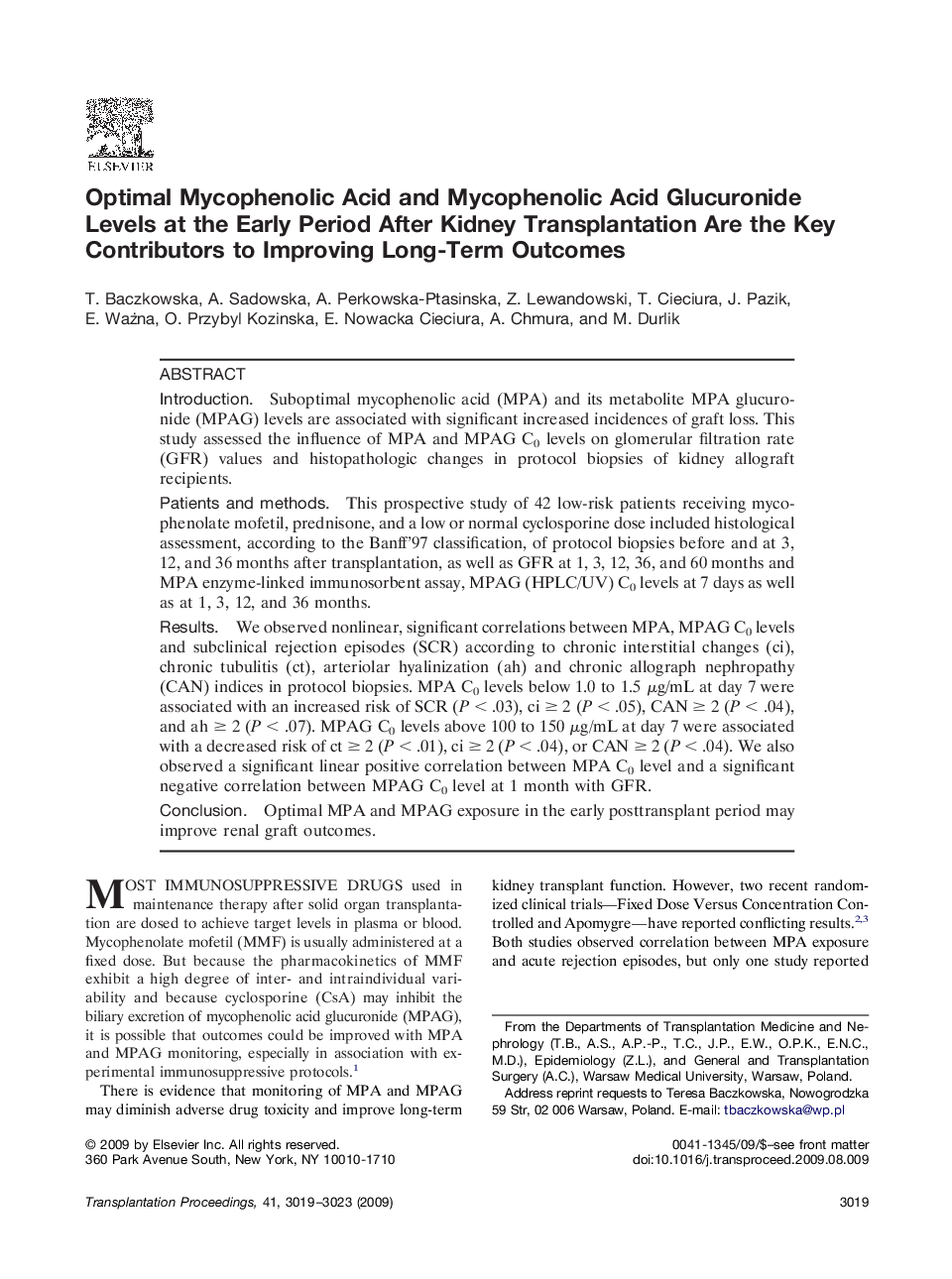| Article ID | Journal | Published Year | Pages | File Type |
|---|---|---|---|---|
| 4258978 | Transplantation Proceedings | 2009 | 5 Pages |
IntroductionSuboptimal mycophenolic acid (MPA) and its metabolite MPA glucuronide (MPAG) levels are associated with significant increased incidences of graft loss. This study assessed the influence of MPA and MPAG C0 levels on glomerular filtration rate (GFR) values and histopathologic changes in protocol biopsies of kidney allograft recipients.Patients and methodsThis prospective study of 42 low-risk patients receiving mycophenolate mofetil, prednisone, and a low or normal cyclosporine dose included histological assessment, according to the Banff'97 classification, of protocol biopsies before and at 3, 12, and 36 months after transplantation, as well as GFR at 1, 3, 12, 36, and 60 months and MPA enzyme-linked immunosorbent assay, MPAG (HPLC/UV) C0 levels at 7 days as well as at 1, 3, 12, and 36 months.ResultsWe observed nonlinear, significant correlations between MPA, MPAG C0 levels and subclinical rejection episodes (SCR) according to chronic interstitial changes (ci), chronic tubulitis (ct), arteriolar hyalinization (ah) and chronic allograph nephropathy (CAN) indices in protocol biopsies. MPA C0 levels below 1.0 to 1.5 μg/mL at day 7 were associated with an increased risk of SCR (P < .03), ci ≥ 2 (P < .05), CAN ≥ 2 (P < .04), and ah ≥ 2 (P < .07). MPAG C0 levels above 100 to 150 μg/mL at day 7 were associated with a decreased risk of ct ≥ 2 (P < .01), ci ≥ 2 (P < .04), or CAN ≥ 2 (P < .04). We also observed a significant linear positive correlation between MPA C0 level and a significant negative correlation between MPAG C0 level at 1 month with GFR.ConclusionOptimal MPA and MPAG exposure in the early posttransplant period may improve renal graft outcomes.
